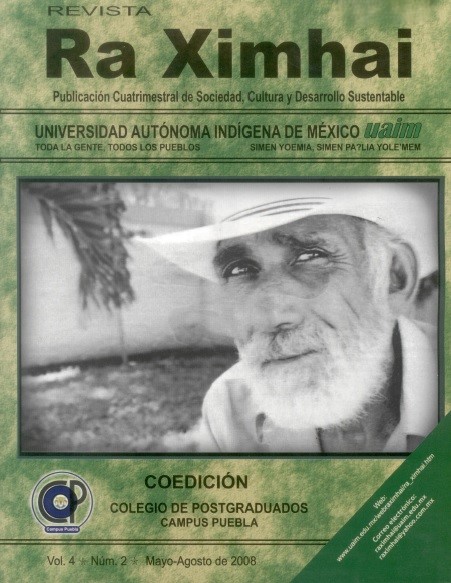“Pinole” with high nutritional value obtained from cereals and legumes”
DOI:
https://doi.org/10.35197/rx.04.02.2008.14.olKeywords:
pinole, protein, esencial aminoacids, sensory evaluation, complementary mixturesAbstract
In our country, a large part of the population, particularly in rural areas, suffers from malnutrition. An alternative to reduce the high rate of malnutrition is to improve the nutritional value of traditional foods by taking advantage of plant products that provide low-cost protein. Pinole is a traditional Mexican food, generally made from toasted corn flour, sometimes sweetened and mixed with cocoa, cinnamon or anise. Due to its main ingredient, pinoles traditionally show a deficiency in essential amino acids, which limits their protein quality. In order to obtain a high protein pinole, combinations of cereals and legumes were prepared, including corn (Zea mays L.), amaranth (Amaranthus hypochondriacus L.), rice (Oriza sativa L.), naked barley (Hordeum vulgare L.), beans (Phaseolus vulgaris L.), chickpea (Cicer arietinum L.), broad bean (Vicia faba L.), and lentil (Lens esculenta Moench). The most acceptable combinations were selected through sensory evaluations. A proximal chemical analysis of the toasted flours was performed, and the profile of essential amino acids, trypsin inhibitors, and in vitro digestibility of the protein was determined. The high protein pinole composition was: 35-20-40-5 (corn-amaranth-chickpea-broad bean); 35-20-40-5 and 30-20-40-10 (corn-amaranth-chickpea-lentil) stood out in important aspects such as: greater quantity, quality and digestibility of their protein, as well as greater or similar acceptability compared to corn pinole. This product is an excellent source of protein, viable for inclusion in the diet of the Mexican population and possibly in other regions of Latin America.
Downloads
References
Bressani, R., Lau, M. y Vargas S. M. 2003. Protein and cooking quality and residual content of dehydroxyphenylalanine and of trypsin inhibitors of processed mucuna beans (mucuna spp). Tropical and Subtropical Agroecosystems, p. 197 - 212.
–––––FAO/OMS/UNU (Organización de las Naciones Unidas y la Alimentación/Organización Mundial de la Salud/Universidad de las Naciones Unidas). 1985. Necesidades de energía y de proteínas. Informe de una Reunión
Consultiva Conjunta FAO/OMS/UNU de Expertos. Serie de Informes Técnicos, No.724, Ginebra, OMS. p. 56-68.
Heninger, G. R., Delgado, P.L, Charney, D. S, Price L.H, Aghajanian G. K. 1992. Tryptophan-deficient diet and amino acid drink deplete plasma tryptophan and induce a relapse of depression in susceptible patients. J Chem Neuroanatomy 5, p. 347-348.
Hernández, M., Chávez, A. y Bourges, H. 1996. Valor Nutritivo de los Alimentos Mexicanos. 9a ed. México. Instituto Nacional de la Nutrición Salvador Zubirán. Publicaciones de la división de nutrición. p. 89.
Krymchantowski A.V, Barbosa JS, Cheim C, Alves L.A. 2001. Oral lysine clonixinate in the acute treatment of migraine: a double-blind placebo-controlled study. Arq Neuropsiquiatr 59(1). p 46-49.
Larmond, E. 1991. Laboratory Methods for Sensory Evaluation of Food. Canada Communication Group Pub. p. 90.
López, TA. 1982. El Hambre. 2ª parte. Editorial Escuela Superior de Agricultura Hermanos Escobar. p. 82 .
Paredes, L. O. 1984. Amaranth, Biology, Chemistry and Technology. Boca Raton, Florida. U. S. A. CRC Press. p. 223.
Rizki, G., L., Arnaboldi, B., Gabrielli, J., Yan, G. S,, Lee, R. K., Turner, S. M., Badger, T. M., Pitas, R. E., Maher, J. J. 2006. Mice fed a lipogenic methionine-choline- deficient diet develop hypermetabolism coincident with hepatic suppression of SCD-1. J. Lipid Res. 47, p. 2280–2290.
Satterlee, L. D., Marshall, H. F., y Tennyson, J. M. 1979. Measuring protein quality.
Journal of the American Oil Chemists' Society, 56(3), p. 103 –109.
Smith, C., Megen, W. V., Twaalfhoven, L., y Hitchcock, C. 1980. The determination of trypsin inhibitor levels in foodstuffs. Journal Science Food Agriculture, 31, p. 341-50.
Downloads
Published
How to Cite
Issue
Section
License

This work is licensed under a Creative Commons Attribution-NonCommercial 4.0 International License.
Usted es libre de:
- Compartir — copiar y redistribuir el material en cualquier medio o formato
- Adaptar — remezclar, transformar y construir a partir del material
- La licenciante no puede revocar estas libertades en tanto usted siga los términos de la licencia
Bajo los siguientes términos:
- Atribución — Usted debe dar crédito de manera adecuada , brindar un enlace a la licencia, e indicar si se han realizado cambios . Puede hacerlo en cualquier forma razonable, pero no de forma tal que sugiera que usted o su uso tienen el apoyo de la licenciante.
- NoComercial — Usted no puede hacer uso del material con propósitos comerciales .
- No hay restricciones adicionales — No puede aplicar términos legales ni medidas tecnológicas que restrinjan legalmente a otras a hacer cualquier uso permitido por la licencia.








